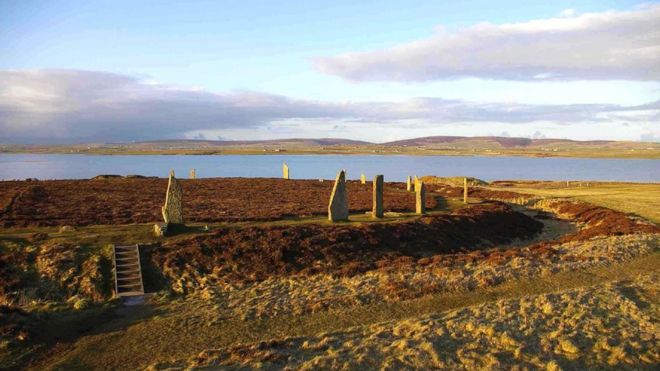The author, Wayne Herschel, claims to have discovered 'star maps' and Gobekli Tepe bears out his theory. The article was published five years ago so if he has been silent since it may be that more recent excavations have not corroborated his brand of archaeoastronomy.
He starts off
A 12000 yr old geoglyph depicting a giant bull, carved into a hill along the Taurus Mountain Range in Turkey, has been discovered. The geoglyph contains a stone circle star map with an enigmatic message
which raises the question whether the bull carving is a cause or a symptom. According to Wiki, the mountains were named for 'storm-gods' because people knew winter storms were responsible for the essential flooding of the Tigris and Euphrates even though Taurus sounds more Latin than Turkic.
Herschel checked Gobekli Tepe online and saw the bull replicated in the layout of the site
What immediately struck me was the geoglyph pattern depicting a bull! It was easy for me to recognise this especially with the knowledge of what exactly it was that I was looking for. At the time I was sure that this could predate the oldest star map in my book: the Lascaux Cave in France whose pictograms are said to date back 17000 years. The star map in the Lascaux cave ‘coincidently’ repeats the pattern at Gobekli Tepe. The pattern of both is literally a mirror image of one another.
So is he 'seeing' a bull pattern because he wants to? He himself explains that he was expecting to find one
I had been looking for these distinct bull worship patterns at Gobekli Tepe ever since the site had been discovered. Surprisingly archaeologists have not noticed the geoglyph at all.
Nothing for certain is known about Gobekli Tepe so his guess could be as good as anyone's but the notions of 'worship' and 'belief' are very subjective and not verifiable on the ground.
The star pattern is a mirror image of the Pleiades if you insert an extra circle at the top
The ruins correlate with the Pleiades... in orientation and with the biggest stone circle also correlating with the biggest star Alcyone. Note the area on the map at the top of the image with a question mark. This is where I believe an original circle once existed instead of in the position of point ‘E’ (an enclosure that is square and not circular but is made up of 4 megalithic stone pillars). For now, let us accept point ‘E’ as representing the star correlation since it is an enclosure and it holds 4 substantial stone pillars
Fair enough, over such a long period the odd question mark is to be expected but apparently the Pleiades layout calls for another circle or enclosure that is no longer visible
The position ‘x’ is where I believe another circle may once have existed and has potentially been removed through either war or later rebuilds. Or perhaps the ancients thousands of years later forgot the secret, its sacredness and used the stones.
The star pattern of Gobekli Tepe has, one suspects, been made to bolster Herschel's general view of a starline ancestry
My ‘star map theory’ insists that ALL the first civilisations on this planet had beginnings with advanced knowledge, all were obsessed in portraying their identical but shared blueprint code of who they were and where they came from: that they were human and that they came from the stars… or more specifically one special star. One would surely expect this kind of passion if humanity shared a unifying and unique genesis: people proud of their heritage as descendants of a very advanced and sacred star ancestor bloodline.
I didn't read any further.

